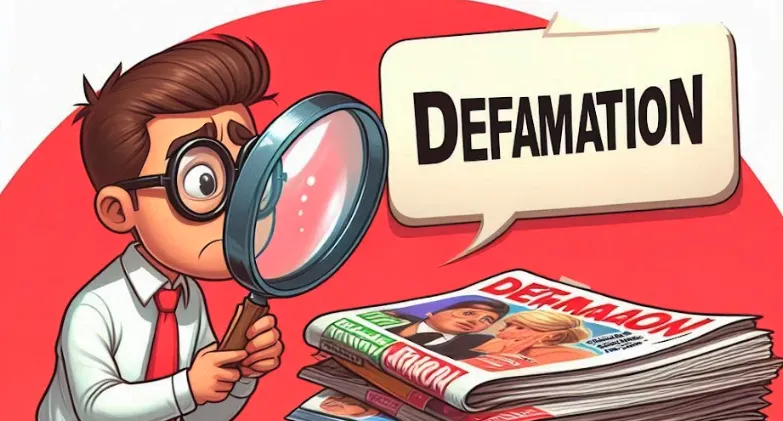Digital Payments In India - Legal Analysis
Digital payments in India have revolutionized the way people make transactions, making it easier, faster, and more secure. The journey began in the early 2000s with the introduction of online banking, credit/debit cards, and internet banking. However, digital payments truly took off with the launch of mobile wallets like Paytm in 2010 and the introduction of the Unified Payments Interface (UPI) by the National Payments Corporation of India (NPCI) in 2016.
UPI allows instant money transfers between bank accounts using just a smartphone, and it's widely used today because of its convenience.
advertisement
Today, people use digital payments for almost everything – from paying bills, shopping online, transferring money to friends, and even for small daily purchases. These methods have made transactions seamless and have greatly reduced the need for carrying cash. The government’s push towards a "Digital India" has also encouraged more people to adopt these payment methods, especially after the demonetization in 2016, which gave a big boost to cashless transactions.
Digital wallets like Paytm, GooglePay, PhonePe, and others have also become popular, allowing users to pay bills, transfer money, and shop online with ease. Today, digital payments cover a wide range of methods including QR codes, Aadhar Enabled Payment Systems (AePS) , and contactless cards, making them an integral part of India's payment ecosystem.
Types of Digital Payments Used in India
1. United Payments Interface (UPI)
What it is: A real-time payment system that allows instant money transfers between bank accounts using a mobile phone.
How it works: You can link your bank account to a UPI app (like Google Pay, PhonePe, or Paytm) and use it to send or receive money by entering a mobile number, UPI ID, or scanning a QR code.
2. Mobile Wallets
What they are: Apps that let you store money digitally for making payments.
Popular examples: Paytm, PhonePe, and Amazon Pay.
How they work: You add money from your bank account or credit/debit card to the wallet and then use it to pay bills, shop online, or transfer money.
advertisement
3. Debit and Credit Cards
**What they are: **Plastic cards issued by banks that let you make payments both online and offline.
**How they work: **You can swipe/tap your card at physical stores using a Point of Sale (POS) machine or enter card details online to make payments.
4. Net Banking
**What it is: **An online service provided by banks to manage your bank account and make payments directly from your account.
How it works: You log in to your bank’s website or app to transfer money, pay bills, or shop online.
5. Aadhar Enabled Payment Systems (AePS)
**What it is: **A system that allows banking transactions using your Aadhaar number and biometric verification.
**How it works: **Mainly used in rural areas, you can withdraw or transfer money at banking points using your Aadhaar and fingerprint.
Aadhar Enabled Payment Systems (AePS)
6. Immediate Payment Service (IMPS)
What it is: A real-time fund transfer service that works 24/7.
How it works: You can transfer money instantly between banks using mobile banking apps, net banking, or ATMs.
advertisement
7. National Electronic Funds Transfer (NEFT)
What it is: An electronic payment system for transferring funds from one bank account to another.
How it works: Unlike UPI or IMPS, NEFT takes a few hours to process and works in hourly batches.
8. Real-Time Gross Settlement (RTGS)
What it is: A system for transferring large sums of money instantly.
How it works: Mainly used for high-value transactions, the minimum transfer amount is usually INR 2 lakh.
9. Contactless Payments
**What they are: **Payments made by tapping your card or smartphone on a contactless payment terminal.
**How they work: **Uses technologies like **Near Field Communication (NFC). **to make quick payments without entering a PIN for smaller amounts.
advertisement
Security Measures for Digital Transactions
1. Two-Factor Authentication (2FA)
What it is: A security process where you need to verify your identity twice before completing a transaction.
How it works: You typically enter your password or PIN and then verify with a One-Time Password (OTP) sent to your mobile phone. This makes it harder for fraudsters to access your account even if they have your password.
2. One-Time Password (OTP)
**What it is: **A unique code sent to your registered mobile number or email for each transaction.
**How it works: **Every time you make a payment, you receive an OTP that you must enter to confirm the transaction. It's valid only for a short time, adding an extra layer of security.
3. Encryption
**What it is: **A technology that scrambles data into a code to protect it from unauthorized access.
How it works: When you enter your card details, PIN, or other sensitive information, it gets encrypted, making it unreadable to hackers. This ensures your data stays safe during transactions.
4. Secure Sockets Layer (SSL) Certificates
What they are: Security certificates that ensure the website or app you're using is safe.
How they work: Websites and apps with SSL have "https://" in their URLs, indicating your data is protected while being transferred. Always check for this before making online payments.
advertisement
5. UPI PIN (Unified Payments Interface Personal Identification Number)
What it is: A 4- or 6-digit PIN you set up when using UPI apps.
How it works: You need to enter this PIN for every UPI transaction, ensuring that only you can authorize payments from your bank account.
6. Virtual Payment Addresses (VPAs)
What they are: Unique IDs used for UPI transactions instead of sharing bank details.
How they work: You create a VPA (like name@bank) for your UPI transactions, so you don't have to share your bank account number, reducing the risk of fraud.
7. Tokenization
What it is: A process that replaces your card details with a unique token for transactions.
How it works: Instead of using your actual card number, a token is generated for each payment, keeping your card information secure.
8. Regular Monitoring and Fraud Detection Systems
What they are: Advanced systems banks and payment providers use to detect suspicious activity.
How they work: These systems monitor transaction patterns and instantly block or alert you if they detect anything unusual, such as multiple failed login attempts or transactions from different locations.
advertisement
9. Setting Transaction Limits
What it is: A feature allowing you to set daily or monthly transaction limits.
How it works: You can restrict the maximum amount that can be spent or transferred, which minimizes the impact of any unauthorized transactions.
Consumer Rights in Digital Payments
1. Right to Safety
You have the right to safe and secure digital payment transactions. Banks, payment apps, and service providers must use encryption, **OTPs (One-Time Passwords), **and other security measures to protect your money and personal information from fraud and unauthorized access.
2. Right to Information
You have the right to know all details about the digital payment services you use. Service providers must clearly inform you about transaction fees, processing charges, terms, and conditions before you make any payment. You should also be informed about any changes to these terms.
3. Right to Transparency in Charges
You should not be charged hidden fees or extra costs without being informed. All charges related to digital payments, such as transaction fees or service charges, must be clearly disclosed to you before you use the service. This helps you avoid unexpected costs.
advertisement
4. Right to Privacy
Your personal and financial information must be kept private and confidential. Service providers must protect your data and cannot share it without your permission. Your card details, bank information, and payment history must be kept secure.
5. Rights to Raise Complaints and Grievances
You have the right to report any issues or problems with your digital payments and get them resolved. If you face any unauthorized transactions, failed payments, or wrong deductions, you can file a complaint with the service provider (e.g., your bank or payment app). They are required to respond and resolve your issue within a specific time frame.
6. Right to Refunds and Compensation
If there’s an. error in your digital payment, you have the right to get your money back. In case of failed or wrong transactions, the service provider must refund the amount promptly, usually within 7 to 10 working days. If the refund is delayed or if you suffer any loss due to the provider’s fault, you may be entitled to compensation.
7. Right to Protection Against Unauthorized Transactions
You are not responsible for any unauthorized transactions made from your account if you report them on time. If you notice an unauthorized transaction, report it to your bank or payment provider immediately. If reported within 3 days, you’re not liable for any loss, and the bank should refund the full amount.
advertisement
8. Right to Know the Redressal Mechanism
You should be informed about the process to resolve any issues or complaints. Every bank or payment service provider must have a clear complaint resolution process. They should provide details about how and where to raise a complaint, how long it will take to resolve it, and whom to contact if you’re not satisfied.
9. Right to Digital Literacy
You have the right to be educated about using digital payments safely. Banks and service providers should offer guidance on how to use digital payments, avoid scams, and protect yourself from fraud. This can include tips, training programs, or easy-to-understand guides.
**Resolving Payments Disputes and Mechanisms **
Common Issues in Digital Payments
- Failed Transactions
- Double Charges
- Unauthorized Transactions
- Incorrect Amounts
1. Contacting the Payment Service Provider or Bank
Immediately contact your bank, digital wallet (e.g., Paytm, PhonePe), or payment service provider through their customer care number, email, or app.
Give them your transaction ID, date, amount, and any error messages you received. Banks and payment providers usually take 7 to 10 working days to resolve issues related to failed transactions. In many cases, you might get an instant resolution for simple problems.
2. Escalating the Matter to Higher Authorities within the Bank or Service Provider
If your issue isn’t resolved or you're unhappy with the response, you can escalate the matter within the bank or service provider. Most banks have a Grievance Redressal Officer whose contact details are available on their website or app.
advertisement
3. Approaching the Banking Ombudsman
The Banking Ombudsman is a service set up by the Reserve Bank of India (RBI) to handle complaints that banks or payment service providers haven’t resolved.
How to Approach:
- File a complaint online through the RBI's Complaint Management System (CMS) website: Complaint Management Systems (RBI).
- You can also send a written complaint to the Banking Ombudsman office in your region.
The Ombudsman will take around 30 days to address your complaint.
4. Approach the Payment System Operator (PSO) Ombudsman
If your issue is related to digital wallets or payment apps, you can approach the Ombudsman for Digital Transactions set up by the RBI.
Like the Banking Ombudsman, you can file a complaint online through the RBI Complaint Management Systems (RBI) website or send it to the **PSO Ombudsman office. **
5. Consumer Courts
If you're still unsatisfied with the resolution, you can file a complaint with the consumer courts (Consumer Dispute Redressal Commission) under the Consumer Protection Act .
You need to submit your complaint along with all documents, such as receipts, transaction details, and communication records. Minimal fees are required to file a complaint, depending on the disputed amount.
advertisement
Role of the Reserve Bank of India (RBI)
1. Regulating Digital Payments Systems
The RBI sets rules and regulations for banks, payment apps, digital wallets, and other financial institutions that handle digital transactions. It issues guidelines to ensure that all these entities follow safe and secure practices. For example, RBI might set rules about how transactions should be verified, how user data should be protected, or how fast refunds should be processed.
2. Licensing and Approval
The RBI decides who can operate digital payment services in India. Companies that want to offer payment services, such as mobile wallets or payment gateways, need a license from the RBI. It carefully reviews their applications to ensure they are capable of handling customers' money securely.
3. Ensuring Security and Fraud Prevention
The RBI works to protect consumers from fraud and unauthorized transactions in digital payments. It sets security standards, such as requiring two-factor authentication (like OTPs) for online transactions. It also issues guidelines on encryption, data protection, and fraud monitoring to keep digital payments safe.
4. Setting Transaction Limits and Charges
The RBI regulates how much money you can transfer and the fees you might have to pay. It decides the maximum amount you can transfer in one go and ensures that transaction charges are reasonable. For example, the RBI might set daily transaction limits for Unified Payments Interface (UPI) or regulate the fees charged by banks for digital transactions.
5. Promoting Digital Payments Systems
The RBI encourages people and businesses to use digital payments. It introduces new initiatives and systems, like UPI and Bharat Bill Payment Systems (BBPS) to make digital payments easy and convenient. It also supports banks and fintech companies in developing new digital payment solutions.
advertisement
6. Issuing Guidelines on New Technologies
The RBI provides rules on how to use new technologies in digital payments. As technology changes, the RBI updates its guidelines. For example, it has introduced rules on **tokenization **(replacing card details with a unique code) to enhance security when using debit and credit cards online. RBI Guidelines on Tokenization
7. Developing Infrastructure for Digital Payments
The RBI helps build the backbone of the digital payments network. It collaborates with the National Payments Corporation of India (NPCI) to develop and manage payment systems like UPI, IMPS (Immediate Payment Service), and NEFT (National Electronic Funds Transfer). These systems allow banks and payment providers to offer smooth and efficient services.
8. Handling Complaints and Dispute Resolution
The RBI helps resolve disputes related to digital payments. If you face issues with a digital payment service that your bank or payment provider cannot resolve, you can approach the RBI’s Banking Ombudsman or the Ombudsman for Digital Transactions. These offices help settle disputes fairly and quickly.
**Frequently Asked Questions (FAQs) **
1. What is a mobile wallet and how does it work?
A mobile wallet is a digital app where you can store money to make payments. You load money into your wallet from your bank account and then use it to pay for things online or at stores.
2. What should I do if my digital payment fails but money is deducted?
The amount usually gets refunded to your account within 7 to 10 working days. If not, contact your bank or payment service provider’s customer care.
3. What is tokenization in digital payments?
Tokenization is a security feature that replaces your card details with a unique code (token) during online payments, making it safer to use your card.
advertisement
4. What should I do if I notice an unauthorized transaction?
Immediately report it to your bank or payment provider’s customer care. If reported within 3 days, you won’t be liable for any loss.
5. What if my problem isn’t resolved by my bank or payment provider?
You can file a complaint with the RBI's Complaint Management System (CMS) at Complaint Management Systems (RBI) or approach the Consumer Court for further help.
6. What is the difference between IMPS, NEFT, and RTGS?
IMPS allows instant transfers 24/7, NEFT processes payments in batches during working hours, and RTGS is used for high-value transfers with a minimum limit of ₹2 lakh.
REFERENCES
- Role of RBI in Digital Payments
- Digital Payments Methods
- Online Dispute Resolution in Digital Payment Matters

Written by Shubhankar Krishnan
A Delhi University graduate and a 1st Year Law Student, gaining experiences in areas under General Corporate, litigation and Intellectual Property Rights.
advertisement
Further Reading
advertisement






